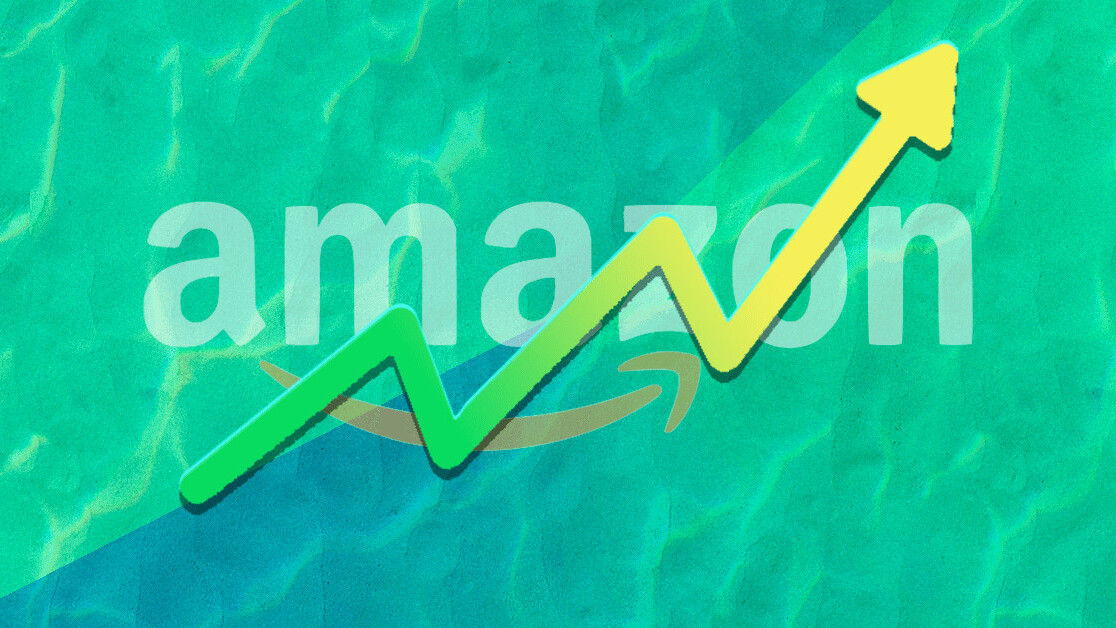
Recently the New York Times reported how Amazon was flooding the market with new logos and brands.
Essentially, Amazon finds cheap manufacturers to produce goods and matches them with sellers that will brand and sell the products on Amazon’s marketplace.
The strategy is to flood the market in a category, leverage the Prime listing, and move on. The products don’t cost much, but by selling such large quantities, participating businesses are making millions of dollars.
This is one of the more recent trends in e-commerce that negatively affects businesses who care deeply about their brands, products, and customers.
[Read: Focus on the client-side to protect your company from Magecart attacks]
How do you compete in an environment when powerful market players are profiting off the race to the bottom?
To survive and grow your business in this new environment, you don’t need to match Amazon’s prices and free shipping policy.
Instead, focus on the customer and how seamless your online experience is, so they buy from you rather than elsewhere.
Here are some ways to ensure you’re running a customer-centric business.
Track engagement with your customers
An important way to distinguish your site is to provide an excellent user experience (UX).
Having a frictionless website that is easy to shop, loads swiftly, and enables customers to find what they are looking for, all while visually pleasing, leads to a well-designed and well-defined online customer journey.
While Amazon offers breadth of product, it doesn’t tell individual brand stories well – your own site is your chance to tell your brand benefit and experience.
[Read: How I grew my third startup faster than ever before]
Once you have the foundation for a consistent and intuitive experience in place, you need to start capturing data so you can uncover opportunities to improve and optimize.
Every person who visits your site leaves a trail of valuable clues into their intentions and experience with your brand. It’s up to you to capture and analyze those clues — and use them to your advantage.
There are many data analytics tools available to help you track visitor behavior and leverage actionable insights, such as Acoustic Experience Analytics or even the free version of Google Analytics.
These tools allow you to record user activity, capture purchase history, and see how they browse and interact with your site.
It’s not as hard as you think
Let’s say you’re tracking how visitors progress through your site after using the search tool or even as users browse products.
If you’re seeing an excess of page bounces, dead-ends, or abandonments, you’ll know there’s a problem in the UX that needs addressing.
It could be as simple as adjusting the color of the Add to Cart button on your product detail page, or as significant as re-arranging the navigation on the site.
Regardless of the issue, these insights are incredibly valuable as it can help you trace the friction points and give you guidance on what to do next.
Embedding a Live chat tool such as LivePerson, Olark, or Drift is another great way to identify friction and struggle points.
Tools like these allow you to directly engage with visitors, whether passively or actively, about their experience and proactively resolve a challenge they may be facing.
In addition to helping your company with Customer Service issues, a live chat can also help you win more sales.
[Read: 4 lessons I learned after spending $6 million on Google Ads last year]
For example, let’s say that by tracking behavior via Acoustic, you discover repeat visitors who pause on a specific product page have a 50/50 chance of converting.
In that case, you can set a rule to proactively invite users who fit that profile to chat with a product specialist who can help prompt the conversion.
And for B2B companies, staffing their live chat tool with a sales-oriented specialist, gives you a great opportunity to upsell while you are resolving questions.
Another great tool that is relatively simple to implement for customer-centric brands is to create a frequently asked questions or FAQs page, especially for B2B brands.
Just like consumers, B2B buyers conduct in-depth research on their own before engaging a sales rep or making a purchase. Many often are cutting out the call to the rep and want to place orders online.
FAQs are a proactive way to inspire and establish trust and provide vital information by answering important questions that help them shop your site more seamlessly, discover the product or services that work best for their needs, and make more informed purchasing decisions.
Customize your approach depending on the audience
Another huge consideration is how millennials in particular like to purchase, especially if you’re in the B2B space.
Responsible for 70% of all B2B purchases, this group of digital natives prefer self-service to interacting with a salesperson.
Last, keep a keen eye on social media. TrustRadius found that 59% of all B2B buyers are millennials who grew up alongside the technology, and if they have a problem with your products or a bad experience with your brand, they’ll take to social media.
Listening tools like those on Hootsuite will help you detect when a customer or prospect is unhappy, giving you the opportunity to reach out and resolve the situation.
Identify areas where your site offers real value over your competitors
If you think, “If we build it, they will come,” prepare to be disappointed.
Of course, this the case for all ecommerce sites, but it’s particularly relevant in the B2B world. You’ll need to think about how your site adds value over traditional offline B2B channels (like direct sales reps, trade shows, and catalogs), as well as online ones (eBay is now a big player in the B2B space).
On the B2C side, Amazon offers a combination of frictionless shopping, low prices, and free shipping that’s hard to compete with. But it’s possible.
You’ll need to look at your business and ask some tough questions, such as:
- How do your shipping policy and rates compare to others?
- How does your return process stack up to your main competitors?
- How are you handling sales and discounts?
You should assume that your customers are diligently researching other sites prior to committing to yours. Build your brand messaging so customers can identify why they should buy from you rather than the big-box stores or leading online marketplaces.
Don’t think it’s hopeless if you can’t afford to offer deep discounts or free shipping.
Direct-to-consumer brands, like Warby Parker, Everlane and Equal Parts are popular among Millennials and Gen Z generations shoppers because they emphasize things like social responsibility, sustainability and quality over quantity.
These generations have different values that affect their purchasing decisions. They are not loyal to any given brand or industry leader, but instead, gravitate towards brands that convey authenticity and share their values through stand-out brand storytelling.
This presents an opportunity for thoughtful messaging to win market share among this prolific demographic.
Find the right balance between initial order and Customer Lifetime Value (CLV)
It’s no secret that every business wants to grow, but gaining new customers is just one way to get there.
Today, customer acquisition costs are so high (examples range from $7.00 for travel, $303 for a B2B software sale, and multiple thousands of dollars for a professional service agreement).
What’s more, it costs 5x more to acquire a new customer than it does to retain an existing one.
For this reason, it’s wise to spend just as much effort on inspiring / motivating existing customers to return to your site to spend time and dollars.
[Read: Reinvest and obsess: How BlaBlaCar became a European tech unicorn]
This will promote higher engagement rate, time spent on site, and repeat visits, as well as higher average order value (AOV) and more conversions.
Tools of the trade, like personalization engines, marketing automation, and retargeting strategies, help you re-engage your existing customers.
Better yet, tools are rapidly growing more efficient and less expensive over time.
Turn your users into loyal customers
Loyalty programs are growing in popularity — they’re a great way to combat the race to the bottom. Rather than slash prices, provide your customers with an incentive to buy from you again.
The engagement tools we mentioned above, can help you track and respond to returning visitor behavior.
AOV and conversion rates are obviously valuable metrics to track, but things are a bit different for B2B.
B2B sites are a tool for existing customers to purchase from you, and efficiency is paramount. Visitors want to access your site, efficiently place their order, and leave as quickly as possible.
[Read: Want to be an entrepreneur? Start by visualizing your success]
Don’t worry if the time spent on site is low (in fact, if it’s too high it could indicate a problem).
A key B2B metric is the number of logins, as logins are necessary for a conversion to occur.
Personalization is also critical; when customers login to your B2B site they should see the pricing and products you’ve pre-negotiated with them.
There’s no doubt that e-commerce businesses are facing stiff competition from brands that can slash prices, offer free shipping, and sell an unbelievably large product catalog.
But it’s possible to both survive and thrive in this environment by being thoughtful about the value you offer your customers and providing them with a best-in-class, customer-centric experience.
Get the TNW newsletter
Get the most important tech news in your inbox each week.




